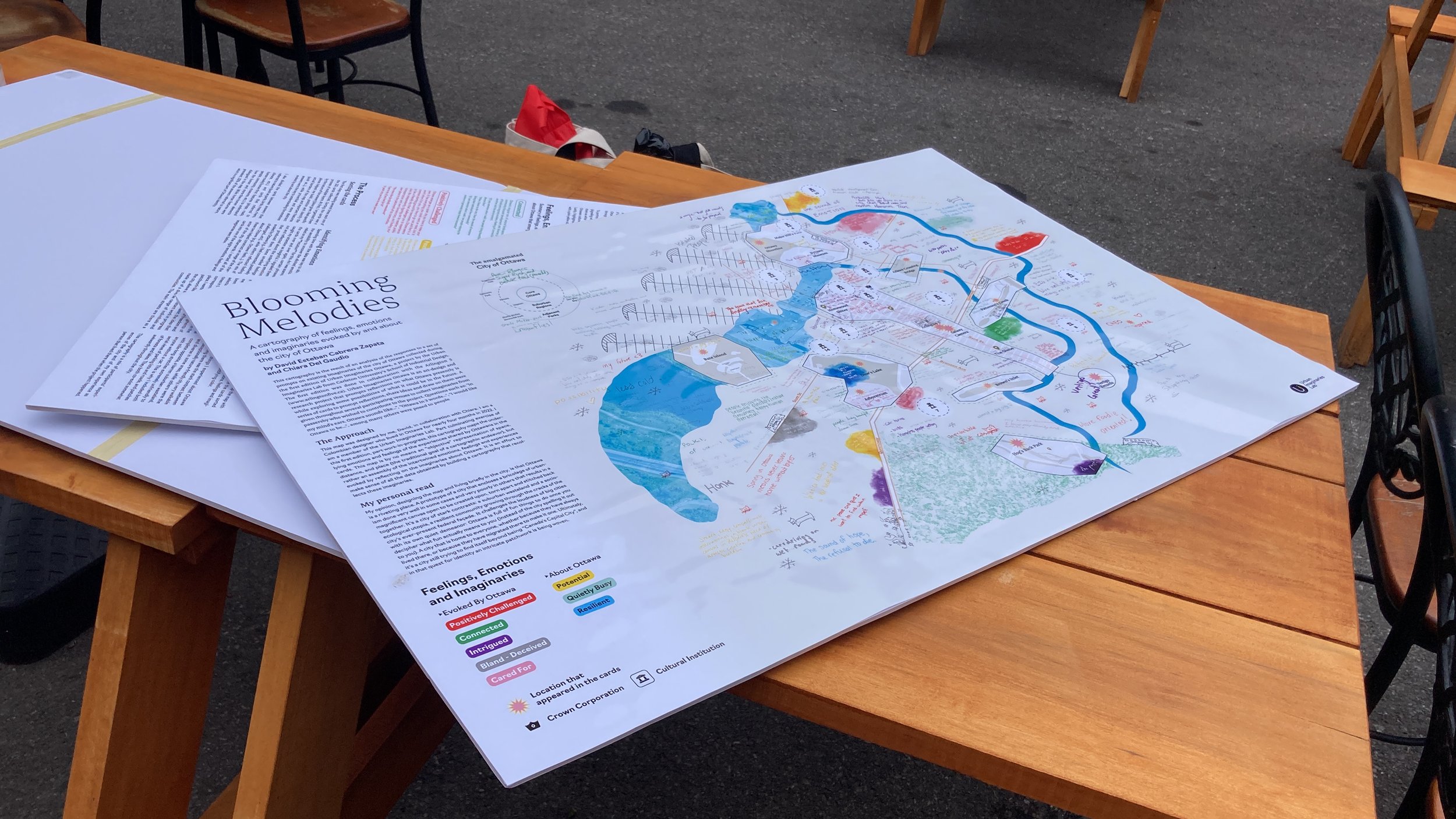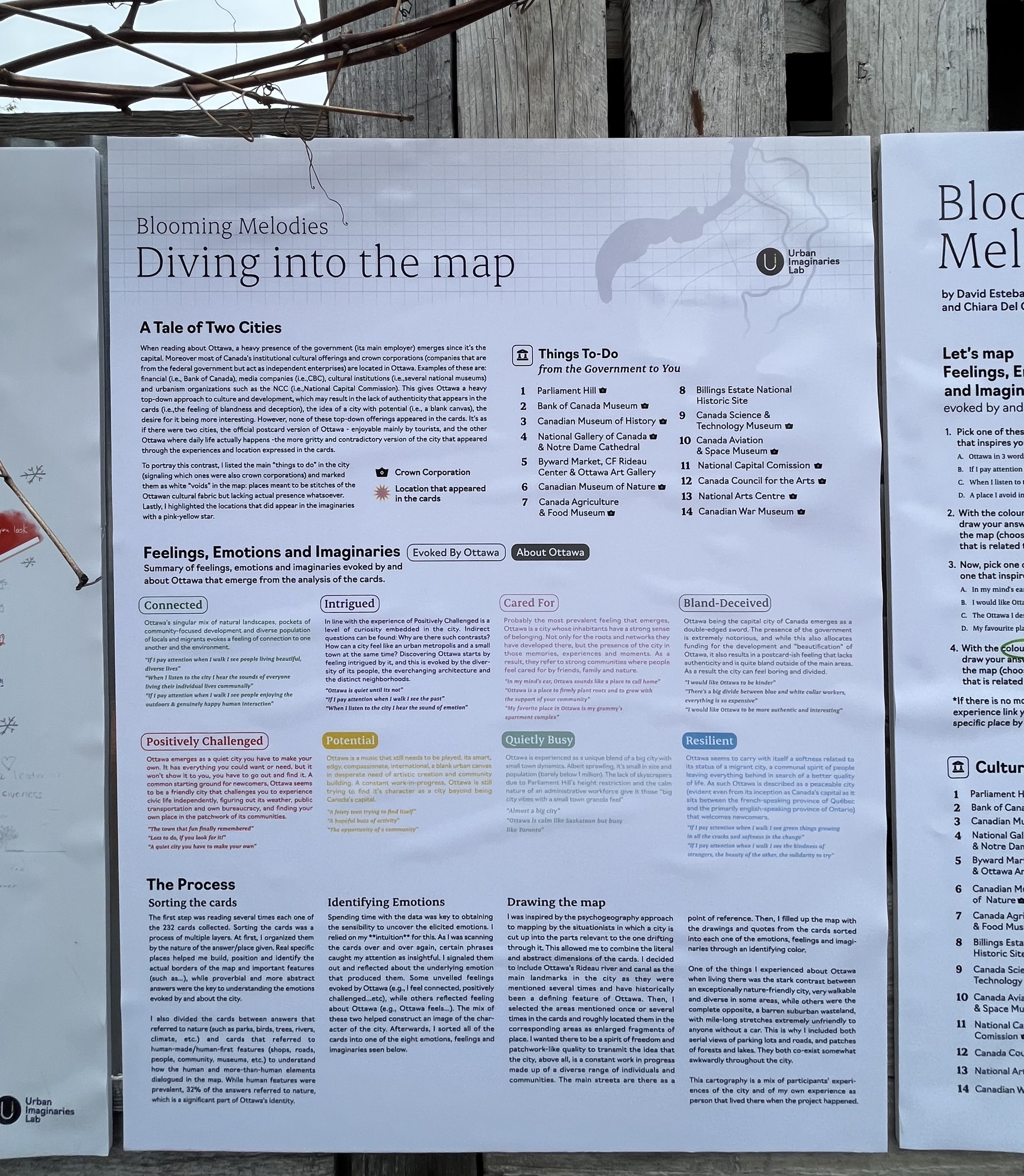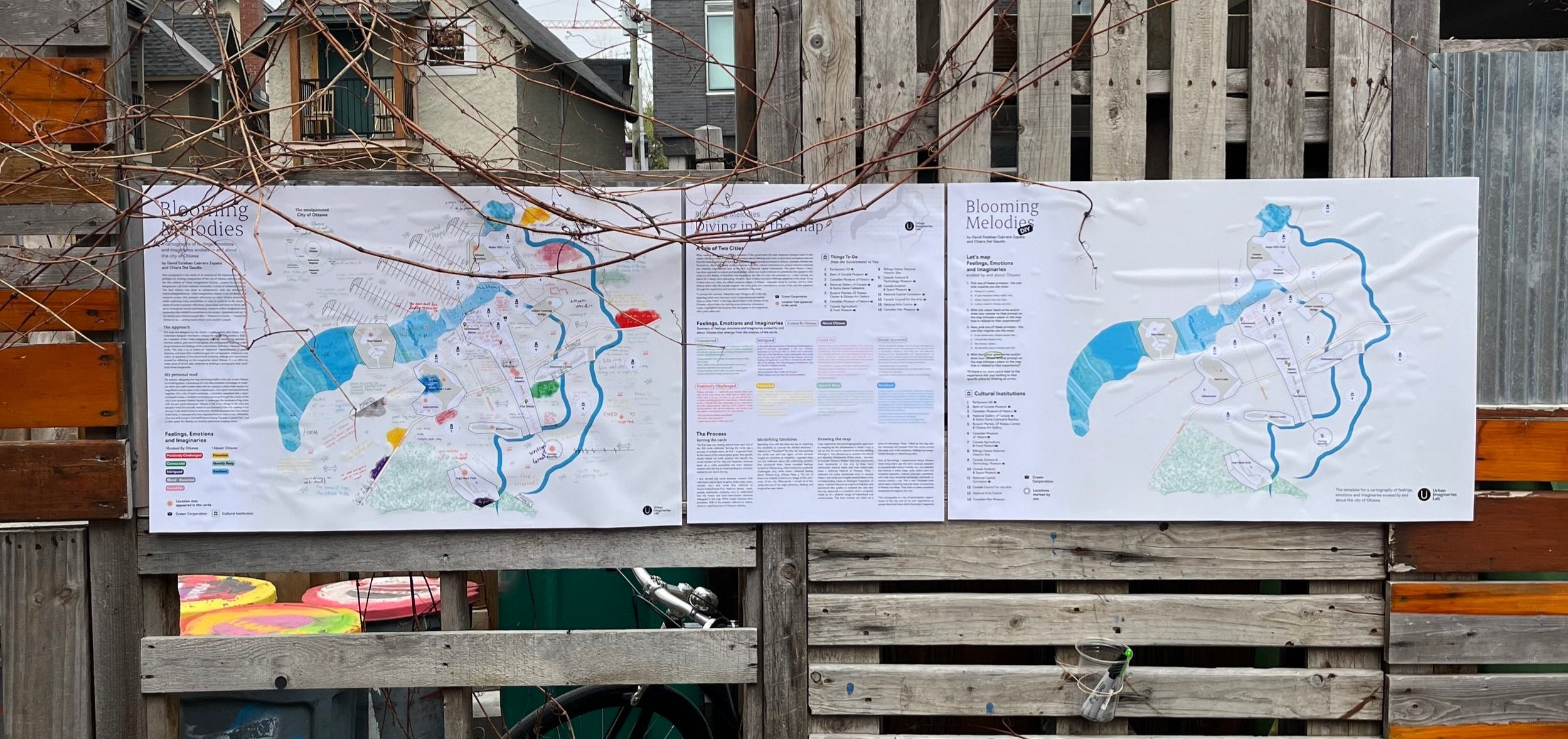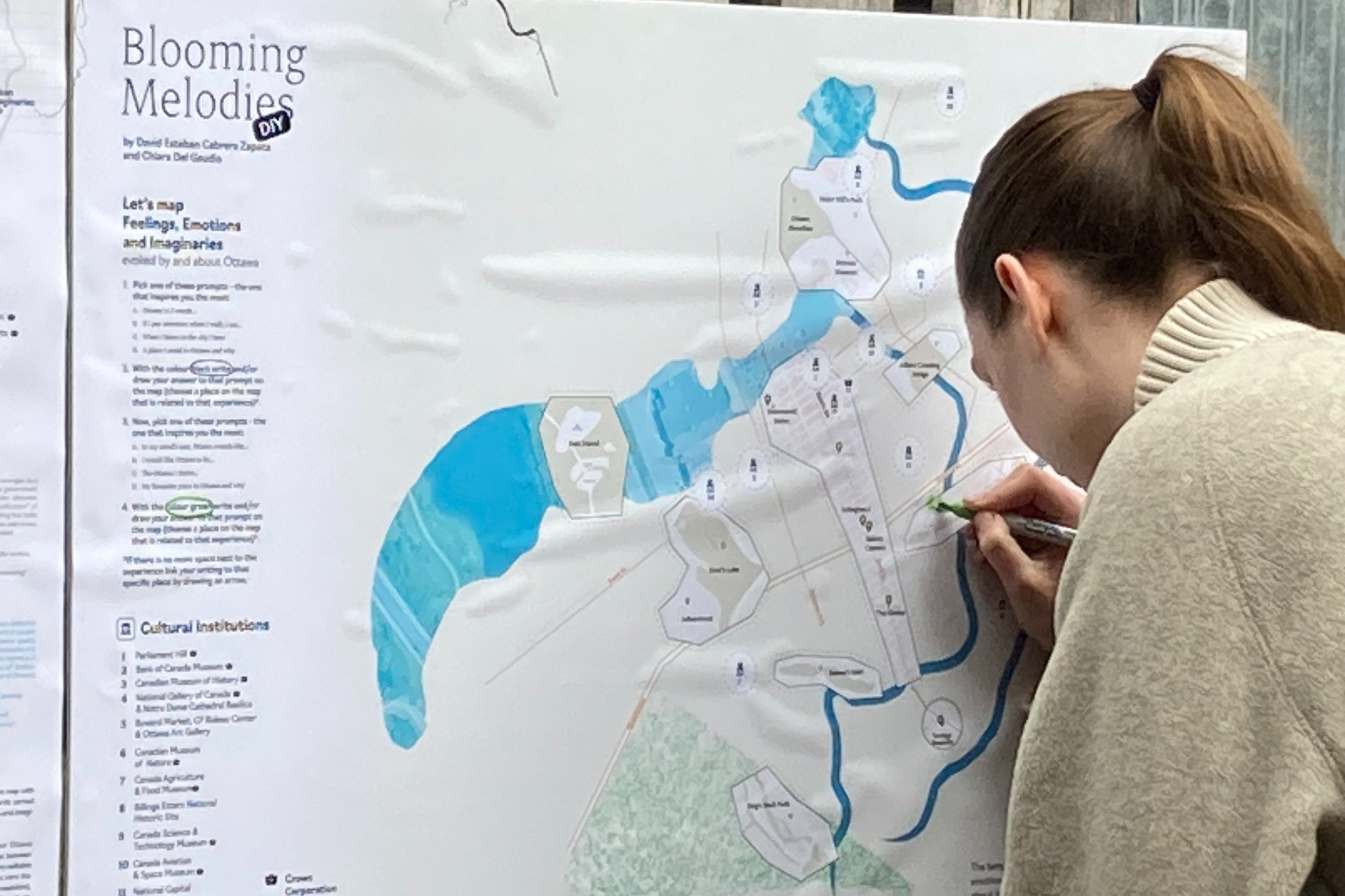Arlington Art Market
Blooming Melodies




the Urban Imaginaries Ottawa project was invited to showcase our work at the Arlington Art Market, hosted by Arlington Five in Ottawa’s Centretown. The event featured local artisans, performance artists, and vendors from across the Ottawa region. The event brings together the community and allows a space for individuals to share common interest in Ottawa’s arts and crafts scene. For the Art Market, the Urban Imaginaries Ottawa Project designed an activity called 'Blooming Melodies’ which sought to engage the community in conversations regarding their city and what it evokes in them.
@ Arlington Five, Ottawa, May 4, 2024
the activity was accompanied by an illustrated cartography of Ottawa designed by David Esteban Cabrera Zapata and Chiara Del Gaudio, reflecting the interpretations of the city as a landscape of meaning. The feelings, emotions, and imaginaries evoked by and about the city of Ottawa were described on the map from data collected and analyzed from responses to prompts from the First Edition research done by the lab.
The mapping process started with card-sorting, where the 232 responses were categorized in distinctive groups to identify the overarching emotions elicited by the city in the second part of the process. David took a psychogeographic approach to creating the map, to combine the literal and abstract dimensions of the cards, and represent them on the map with quotes and drawings from research participants.
the activity, ‘Blooming Melodies’, invited participants to reflect on and explore their current sensory experiences with the city, their desires for the city they would like to live in, as well as some of the problems that currently stand in the way. They were tasked with writing or drawing their responses to questions on the blank map of Ottawa, to co-create a new cartography of Ottawa; this cartography differentiated positive and negative emotions, feelings, imaginaries, and places with colour to visually represent the complexity and uniqueness of attachment individuals have with the city.
Supported By






